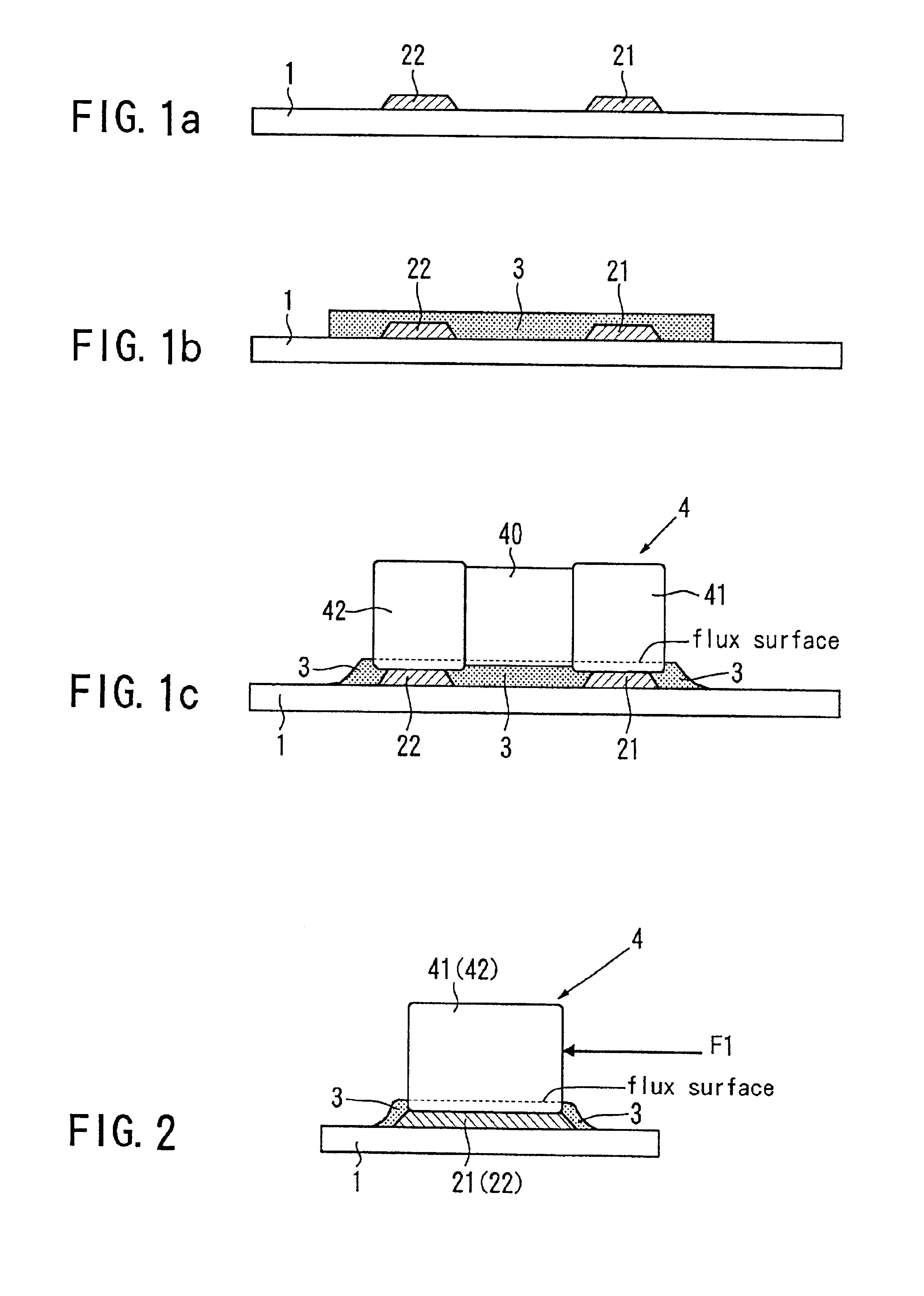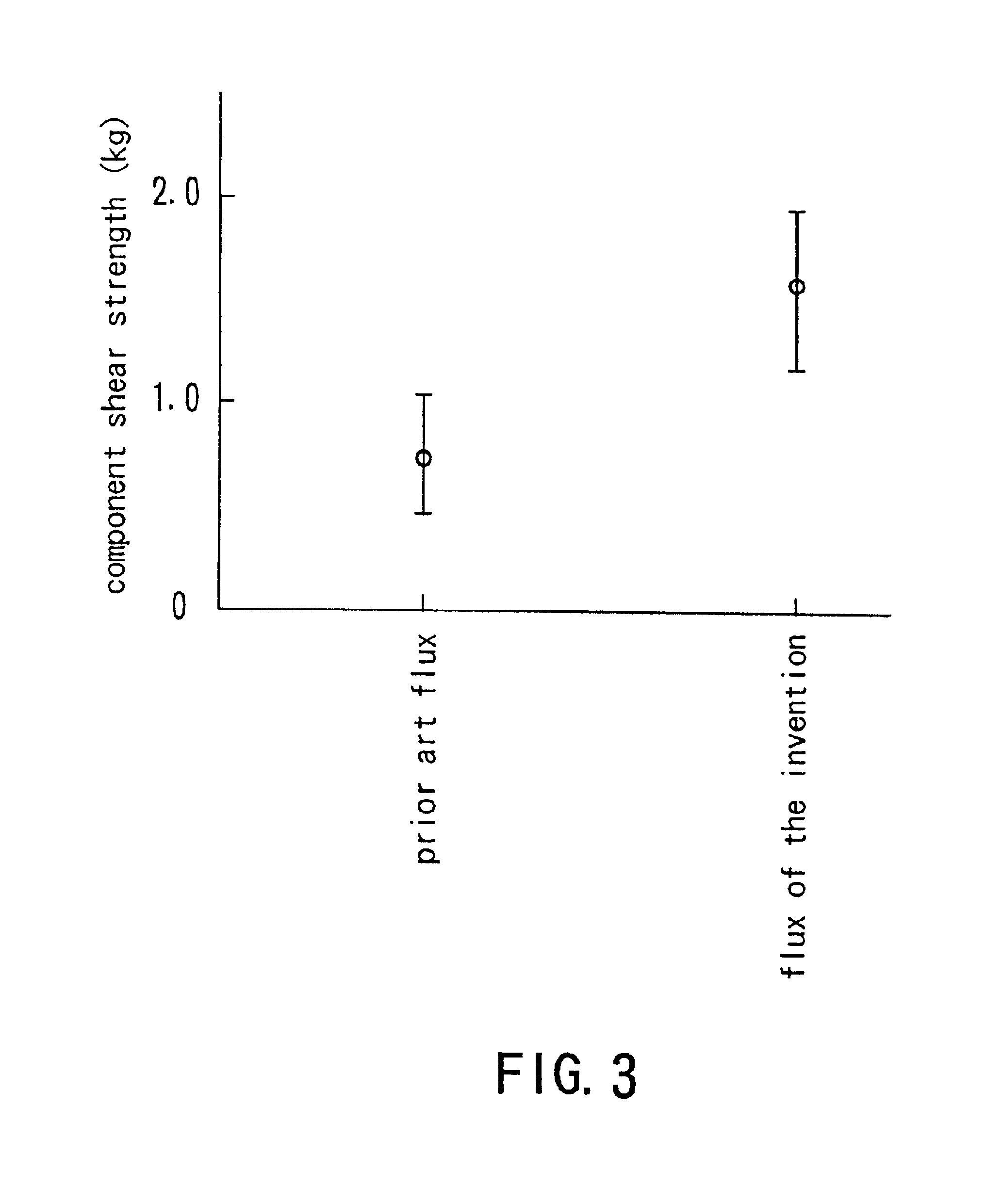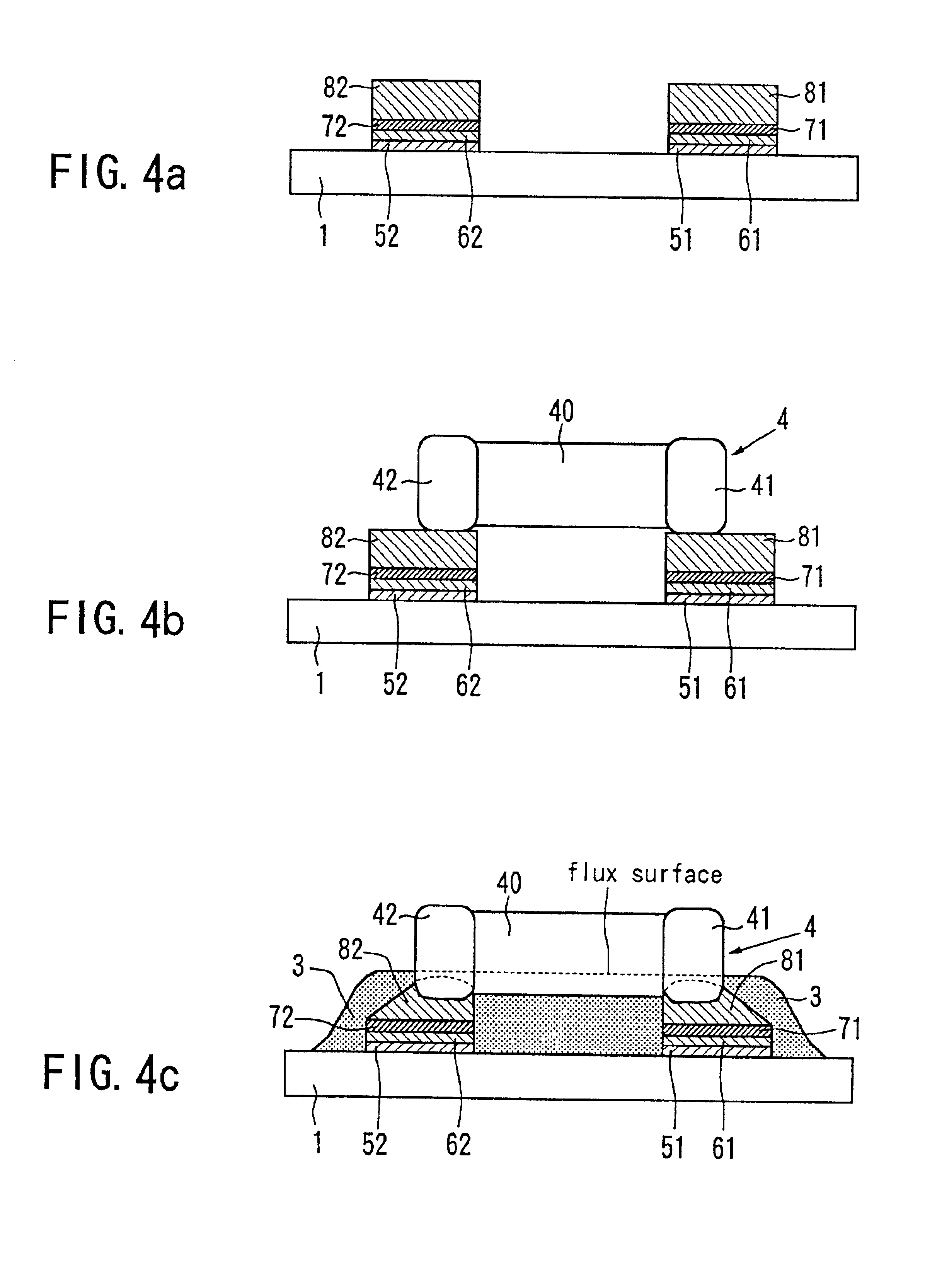Soldering flux, solder paste and method of soldering
- Summary
- Abstract
- Description
- Claims
- Application Information
AI Technical Summary
Benefits of technology
Problems solved by technology
Method used
Image
Examples
embodiment 1
[0064]Bisphenol A was used to constitute the thermo-setting resin and an anhydride of carboxylic acid was used as a hardening agent. The mixing ratio of the thermo-setting resin and the hardening agent was set at 1:1 by weight. In addition, a required degree of viscosity was assured by mixing in small quantities of a solvent and a thixotropic agent.
[0065]A flux 3 prepared by adopting the composition described above was applied (see FIG. 1b) onto a component mounting board 1 (see FIG. 1a) upon which solder bumps 21 and 22 had been deposited in advance. Next, as illustrated and FIG. 1c, an electronic component 4 achieved as a 1 mm (length)×0.5 mm (width) chip was mounted. The electronic component 4 having terminal electrodes 41 and 42 provided at the two ends of a base body 40 to face opposite each other was mounted onto the component mounting board 1 so as to set the terminal electrodes 41 and 42 on the solder bumps 21 and 22 respectively. The component mounting board 1 having been m...
embodiment 2
[0069]A soldering paste was prepared by mixing the flux prepared in embodiment 1 with soldering powder. The quantity of the flux that was mixed relative to the quantity of the soldering powder was set at 10 wt %. A chip component was soldered onto a component mounting board using this soldering paste. FIGS. 4a through 4c present partial cross-sectional views, showing the component mounting board in detail and the soldering process through which the chip component was soldered onto the component mounting board. The component mounting board 1 included two lands formed by sequentially laminating a Cu film 51 (52), an Ni film 61 (62) and an Au film 71 (72).
[0070]The soldering paste 81 (82) according to the present invention was applied onto each land at the component mounting board 1 (see FIG. 4a). The soldering paste 81 (82) was applied through a printing process implemented by using a metal mask having a 100 μm thickness. The dimensions of the opening at the metal mask were set to 0.5...
embodiment 3
[0077]A soldering paste was prepared by mixing the flux prepared in embodiment 1 with soldering powder. The quantity of the flux that was mixed relative to the quantity of the soldering powder was increased to 20 to 45 wt %.
[0078]An electronic component 4 was soldered onto a component mounting board 1 using this soldering paste as illustrated in FIG. 7. To explain in more specific terms in reference to FIG. 7, the component mounting board 1 included two lands formed by sequentially laminating a Cu film 51 (52), an Ni film 61 (62) and an Au film 71 (72) (see FIG. 7a).
[0079]The soldering paste 81 (82) according to the present invention was applied onto each land at the component mounting board 1 (see FIG. 7a). The soldering paste 81 (82) was applied through a printing process implemented by using a metal mask having a 100 μtm thickness. The dimensions of the opening at the metal mask were set to 0.5 mm×0.3 mm to match the dimensions of the lands on which the electronic component 4 was...
PUM
| Property | Measurement | Unit |
|---|---|---|
| Temperature | aaaaa | aaaaa |
| Temperature | aaaaa | aaaaa |
| Temperature | aaaaa | aaaaa |
Abstract
Description
Claims
Application Information
 Login to View More
Login to View More - R&D
- Intellectual Property
- Life Sciences
- Materials
- Tech Scout
- Unparalleled Data Quality
- Higher Quality Content
- 60% Fewer Hallucinations
Browse by: Latest US Patents, China's latest patents, Technical Efficacy Thesaurus, Application Domain, Technology Topic, Popular Technical Reports.
© 2025 PatSnap. All rights reserved.Legal|Privacy policy|Modern Slavery Act Transparency Statement|Sitemap|About US| Contact US: help@patsnap.com



